Tomb QV73
Her tomb in the Valley of the Queens, QV73 is not far from those of other members of Ramesses's family (QV68 – Meritamen, QV71 – Bintanath, QV75 – Henutmire); it is between the tombs of her elder half-sister Bintanath and the 20th dynasty queen Duatentopet (QV74). QV73 remains closed to visitors due to numerous faults and structural concerns related to open joints, and bedding plane tilting.
The tomb may have been carved for a generic princess and after Henuttawy's death was adapted for her. In some areas of the tomb the cartouches are blank, but in the main burial chamber faint traces of her name have been recorded. [2] The tomb consists of a burial chamber with two pillars and two side rooms. The decorations resemble those in the tomb of Nefertari.

Nefertari, also known as Nefertari Meritmut, was an Egyptian queen and the first of the Great Royal Wives of Ramesses the Great. She is one of the best known Egyptian queens, among such women as Cleopatra, Nefertiti, and Hatshepsut, and one of the most prominent not known or thought to have reigned in her own right. She was highly educated and able to both read and write hieroglyphs, a very rare skill at the time. She used these skills in her diplomatic work, corresponding with other prominent royals of the time. Her lavishly decorated tomb, QV66, is one of the largest and most spectacular in the Valley of the Queens. Ramesses also constructed a temple for her at Abu Simbel next to his colossal monument there.
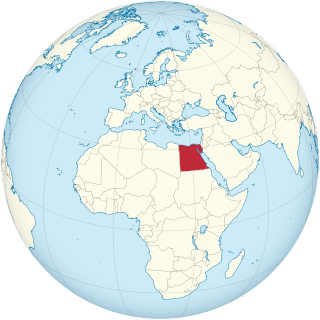
Articles related to Egypt include:

Abu Simbel is a historic site comprising two massive rock-cut temples in the village of Abu Simbel, Aswan Governorate, Upper Egypt, near the border with Sudan. It is situated on the western bank of Lake Nasser, about 230 km (140 mi) southwest of Aswan. The twin temples were originally carved out of the mountainside in the 13th century BC, during the 19th Dynasty reign of the Pharaoh Ramesses II. Their huge external rock relief figures of Ramesses II have become iconic. His wife, Nefertari, and children can be seen in smaller figures by his feet. Sculptures inside the Great Temple commemorate Ramesses II's heroic leadership at the Battle of Kadesh.

The Valley of the Queens is a site in Egypt, where the wives of pharaohs were buried in ancient times. It was known then as Ta-Set-Neferu, meaning "the place of beauty". It was most famous for being the burial site of many wives of Pharaohs. Pharaohs themselves were buried in the Valley of the Kings.

Bintanath was the firstborn daughter and later Great Royal Wife of the Egyptian Pharaoh Ramesses II.
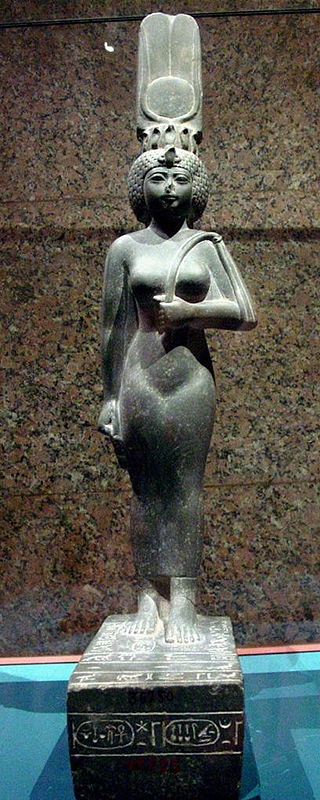
God's Wife of Amun was the highest-ranking priestess of the Amun cult, an important religious institution in ancient Egypt. The cult was centered in Thebes in Upper Egypt during the Twenty-fifth and Twenty-sixth dynasties. The office had political importance as well as religious, since the two were closely related in ancient Egypt.

Mutnedjmet, also spelled Mutnedjemet, Mutnodjmet, Mutnodjemet was an ancient Egyptian queen, the Great Royal Wife of Horemheb, the last ruler of the 18th Dynasty. The name, Mutnedjmet, translates as: The sweet Mut.
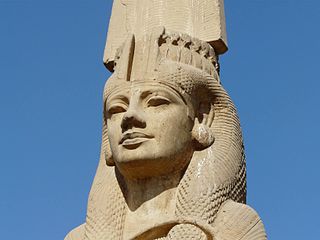
Meritamen was a daughter and later Great Royal Wife of Pharaoh Ramesses the Great.
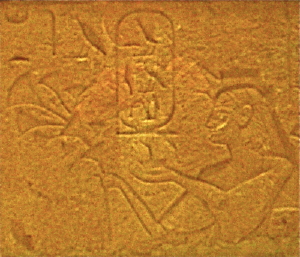
Tuya was the wife of Pharaoh Seti I of the Nineteenth Dynasty of Egypt and mother of Tia, Ramesses II, and perhaps Henutmire.

Ramesses was an ancient Egyptian crown prince during the 19th Dynasty.

Henutmire was an ancient Egyptian princess and queen. She was one of the eight Great Royal Wives of Pharaoh Ramesses II of the 19th Dynasty of Egypt.

Nebettawy(nb.t-t3.wỉ; “Lady of the Two Lands”) was an ancient Egyptian princess and queen, the fifth daughter and one of the eight Great Royal Wives of Pharaoh Ramesses II.
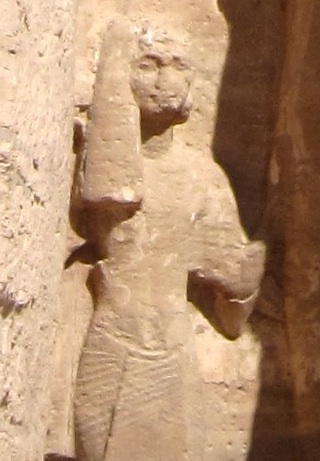
Meryatum was an ancient Egyptian prince and High Priest of Re, the son of Pharaoh Ramesses II and Queen Nefertari.

Ahmose was a princess of the Seventeenth Dynasty of Egypt. She was the only known daughter of Seqenenre Tao by his sister-wife Sitdjehuti. She was the half-sister of Pharaoh Ahmose I and Queen Ahmose-Nefertari. Her titles are King's Daughter; King's Sister.

Duathathor-Henuttawy, Henuttawy or Henttawy("Adorer of Hathor; Mistress of the Two Lands") was an ancient Egyptian princess and later queen.
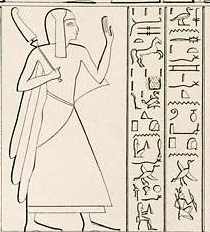
Pareherwenemef was an ancient Egyptian prince of the Nineteenth Dynasty of Egypt, the third son of Pharaoh Ramesses II, the second by Queen Nefertari.
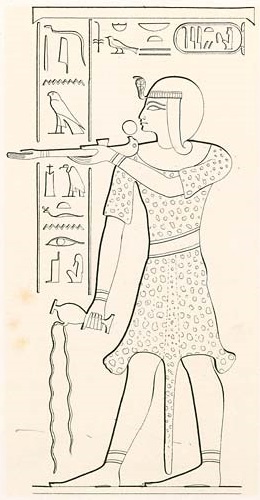
Tyti was an ancient Egyptian queen of the 20th Dynasty. A wife and sister of Ramesses III and possibly the mother of Ramesses IV.

Abu Simbel is a village in the Egyptian part of Nubia, about 240 km (150 mi) southwest of Aswan and near the border with Sudan. As of 2012, it has about 2600 inhabitants. It is best known as the site of the Abu Simbel temples, which were built by King Ramses II.

Baketmut was an ancient Egyptian princess of the Nineteenth Dynasty. She was the second daughter of Pharaoh Ramesses II.
This page is based on this
Wikipedia article Text is available under the
CC BY-SA 4.0 license; additional terms may apply.
Images, videos and audio are available under their respective licenses.


















